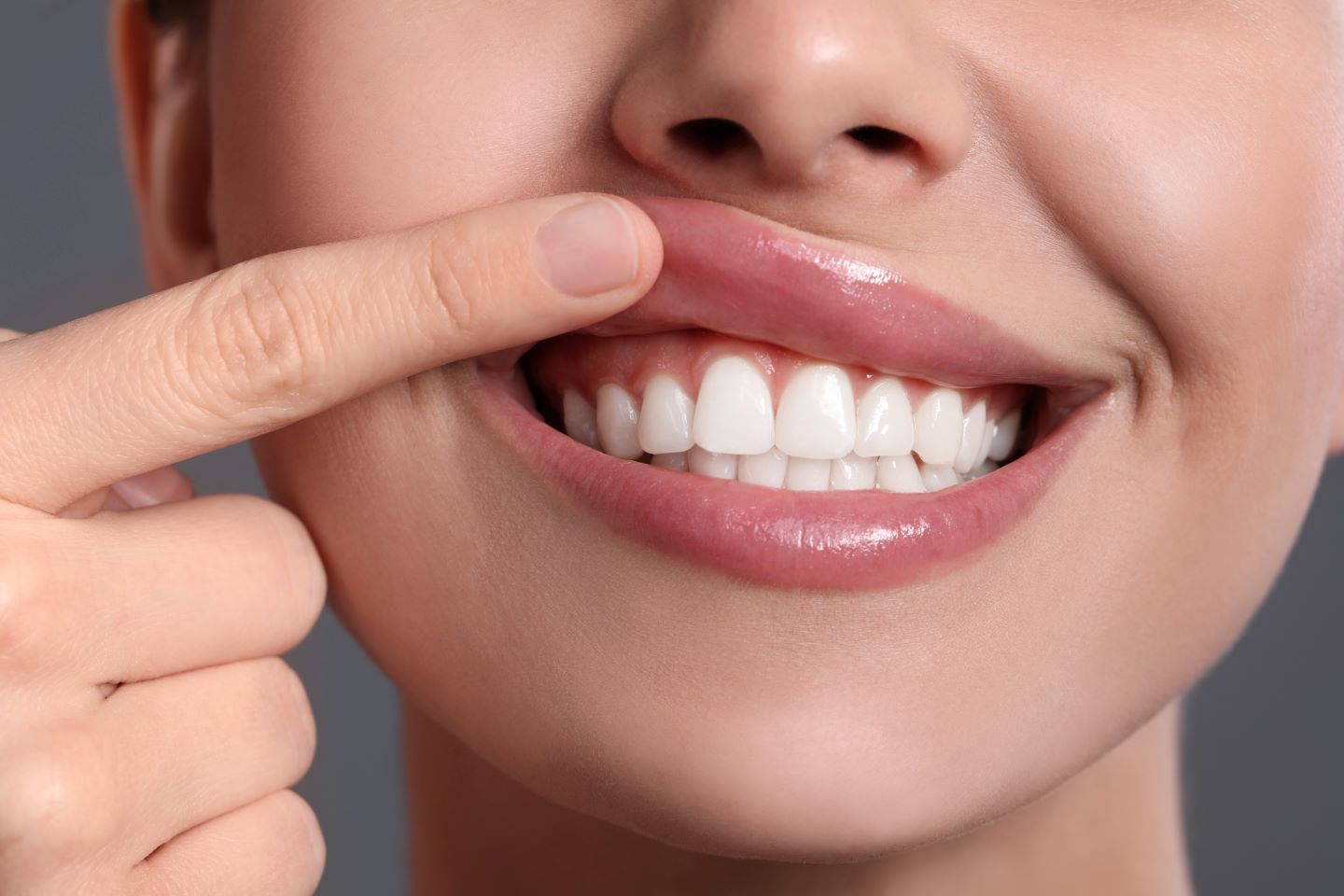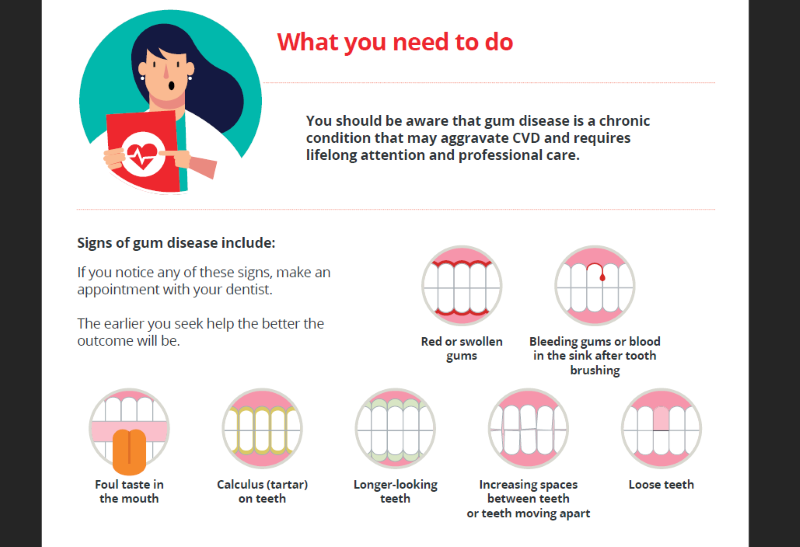
Periodontitis is the world’s sixth most common disease in the global burden of disease.
At a school of dentistry, the periodontist peering into a mouthful of teeth afflicted by gum disease would sound the alarm. While it is not lethal, periodontitis can literally shake your pearly whites to the bone.
“Gum disease was identified 148 years ago but it is not on the priority list of oral health because it does not kill,” says Dr Jeanette Chua, a diplomate of the American Board of Periodontology; section chair of the International Team of Implantology, Southeast Asia; a member of the American Academy of Periodontology and the Malaysian Society of Periodontology. In dentistry, too, if the patient is not in pain, his case is not considered an emergency.
Awareness of periodontitis, which affects the tissues and bones that surround and support the teeth, is very low among most people. It was only in the last 15 years that Americans have drummed up attention to it, says Chua, who sees Gum Health Day as an opportunity to do the same in Malaysia and educate people on the connection between oral and general health.
“When an infection starts in the gums, the body reacts to it; that’s why they are swollen. When I returned from the US in 2008, the Chinese often told me their bodies were yit hei (heaty), when what they had was an infection. Doctors would prescribe antibiotics, which solved the swelling but not its cause.”
The biggest link — “There is lots of scientific proof,” she adds — is in medical diseases that have a correlation to periodontitis. For example, the same kind of bacteria that starts dental plaque formation has been found to have travelled to the heart and coagulate there, promoting inflammatory or immune response within the atherosclerotic plaque.
“Periodontitis is the world’s sixth most common disease in the global burden of disease. Unfortunately, it is not identified or picked up easily.”
It begins as a low-grade infection known as gingivitis, the main signs of which are red, swollen and bleeding gums. Gingivitis generally does not cause any pain and is reversible with treatment and good oral care. But if untreated, it can worsen to periodontitis, with plaque spreading and growing below the gum line, as medical literature explains.
The bacteria in plaque produce toxins that irritate the gums and stimulate a chronic inflammatory response whereby the body turns on itself — tissues and bones that support the teeth are broken down and destroyed.
Periodontitis does not just affect one tooth, Chua cautions. It destroys the bone between the teeth because they sit right next to each other.
chua.jpg

As gums separate from teeth, pockets that form between them become infected. As the disease advances, the pockets deepen and more gum tissue and bone are destroyed, causing teeth to shift position, start wobbling or hurt when you chew.
A March 2023 report by the World Health Organization says severe periodontal diseases affect 19% of the global adult population, representing more than one billion cases worldwide. Risk factors include poor oral hygiene, smoking, metabolic diseases such as diabetes, and hormonal changes during pregnancy.
“That is why pregnant women say, ‘Every time I have a child, I lose one tooth’. It’s actually gum disease because their immune system is not strong enough to defend them against a low-grade infection. Their gums may swell and bleed during pregnancy but they dare not see a dentist, which is understandable. After delivery, the bleeding stops and all’s well. But the tartar and plaque are there and they build up over the years,” Chua says.
Symptoms of periodontitis are bleeding, swollen gums, shaky teeth, pain and sometimes bad breath. The disease can spread to the point that the gum comes away from the tooth and supporting bone, causing teeth to become loose and fall out.
What is not always obvious is that periodontitis strikes deep at the bone. Most people seek treatment only when there is pain or a cavity, or if a tooth cracks and falls out. By then, the rot has set in and it might be too late to save their incisor, canine, bicuspid or molar.
Chua likens teeth to a house, with gums and bones being the grass and soil they hold on to. When that foundation collapses, the building falls too. Instead of tackling the root of this problem — gum disease — people then start talking about braces (to align teeth that have moved out of position) and dental implants and bridges (to plug holes where teeth used to be).
“If you don’t have bone, whatever you build on the tooth will not last. If you don’t have the foundation, you can repair and build around the tooth but it will still collapse one day.
“When bone collapses too much over time, gums, which do not have bone to hold them, shrink, thus exposing the roots of teeth. People call this recession and think it is part of ageing. It’s not.”
Whether the recession is caused by occlusion, which is the bite, braces, genetic factors or gum disease — generally the case — awareness is so low that dentists will immediately slap a filling on top.
Losing teeth was considered normal in the olden days, when people had to make do with dentures despite the difficulty in eating. Today, with everyone aspiring for a better quality of life, eating well is vital to well-being.
A full periodontal exam is required to identify, diagnose and prescribe the right treatment. Lack of dentists with such specialty training compound the problem, leaving patients bemoaning how, after fixing braces to straighten teeth — without looking at its foundation, Dr Chua stresses — they sometimes find loose teeth they cannot bite on.
As good habits start from home, parents can teach their children how to brush and floss their teeth correctly. If they have bleeding gums, shaky teeth or swelling now and then, have a trained dentist do a full periodontal charting and ensure diagnosis is accurate, with necessary radiographs, before it is treated. Treatment involves long-term monitoring similar to that for diabetes.
Every case is different and each of our 32 teeth has a different anatomy. There are nine specialties in dentistry, eight of which involve mechanical work (drilling, filling, crowning and aesthetics).
“Periodontists are the back-end workers; we deal with the general health of the teeth. In the US, if you don’t have the foundation checked out, you cannot do the other work. It’s different in Asia, but awareness is growing,” Chua says.
Besides younger people, who place more importance on a healthy lifestyle than buying a house, there are also those close to retirement who tell her, “I finally have time. Now let’s fix this.”
Cost is a major factor. But there are perks to having a strong set of good teeth. “You enjoy food, have a better quality of life and are able to smile and speak with confidence,” she says.
Making gum health a part of your lifestyle
“Healthy gums look good on you. Protect them!” This is the call from the European Federation of Periodontology (EFP), to convey the fact that gums play an important role in our general health and appearance: They are part of our well-being and beauty.
Hence the slogan for Gum Health Day 2023, which aims to encourage people to prioritise the prevention of gum disease and maintain oral health because it enhances overall facial aesthetics and, in turn, self-confidence in our everyday social interactions.
Held annually on May 12 since 2013, this global event emphasises the causes and consequences of gum disease, a widespread chronic condition often associated with serious systemic disorders. There is a different slogan each year — “Treat your gums” was the one for 2022 — and EFP member societies worldwide organise educational initiatives and campaigns to get the message across.
Protection involves the prevention of gum disease, detecting it early, getting the correct diagnosis and treating it successfully.
“A nice-looking smile is not a random factor but most often a consequence of maintaining good gum and oral health, and Gum Health Day 2023 will help disseminate that message among dentists, health professionals and the general public,” says Spyros Vassilopoulos, the EFP coordinator for this year.
This article first appeared on May 8, 2023 in The Edge Malaysia.



